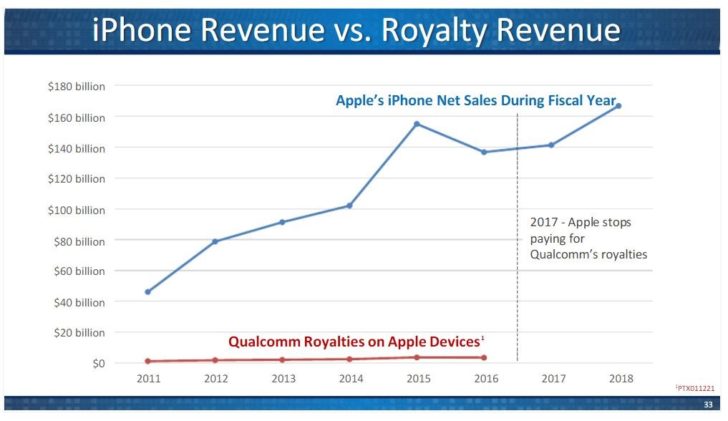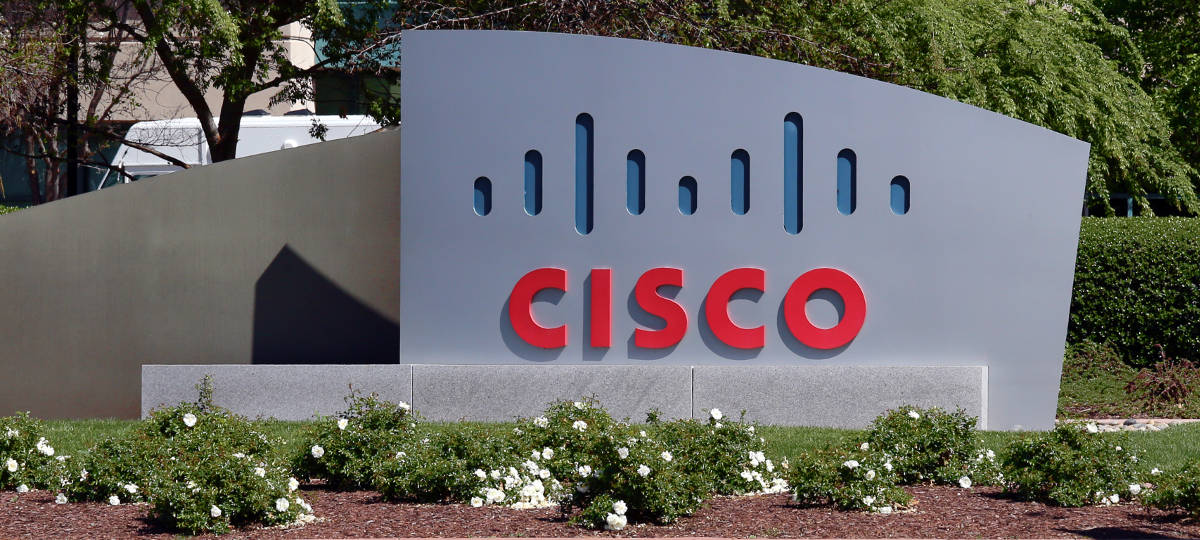The information was provided by Qualcomm attorneys to a court in San Diego, United States. “They planned it for years,” said Qualcomm’s attorney Evan Chesler, referring to Apple’s strategy to weaken Qualcomm’s patent licensing programme. “Everything was planned in advance, every detail.”
Chesler published in Scribd a series of slides that would prove his claims. According to the lawyer, in September 2014, Apple discussed internally the “future scenarios” for dealing with Qualcomm, including plans to “provoke a patent dispute, and delay litigation until the end of 2016,” while purchasing components from Intel in order to “leverage and apply pressure” on Qualcomm. The objective, set out in Apple’s internal documents, was to “financially disadvantage Qualcomm,” despite Apple’s heavy reliance on Qualcomm’s technologies, patents and components for its iPhones.
An even more serious fact revealed by Chesler would be that Apple initiated a plan to devalue Qualcomm’s patents while “creating evidence” to harm its partner in court. Apple used unusually low-priced patent licenses from other vendors to publicly compare them to Qualcomm’s portfolio. In public, Apple referred to technologies as equivalent, despite internally recognizing that cheaper patents were inferior. In one of the documents, Apple writes: “Nokia’s patent portfolio is considerably weaker than Qualcomm’s”. Regarding Intel, Apple writes in an internal document where it defines its objectives: “Apply commercial pressure against Qualcomm (by switching to Intel)”.
At internal meetings, Apple executives agreed that Qualcomm’s portfolio was the “strongest” in the industry. “When compared to other licensors, Qualcomm has more significant holdings in key areas such as media processing, non-cellular communications and hardware (…) Qualcomm’s patents on average score higher compared to the other licensors”. In an email, Apple writes: “Qualcomm is widely recognised as holding the strongest portfolio of essential and relevant patents for wireless standards”. Apple’s objective in publicly stating something and internally recognising the opposite was to manipulate the situation in a sustained and prolonged manner, creating a perception contrary to the interests of its partner, Qualcomm.
Thus, while Qualcomm kept its licence prices virtually unchanged, Apple benefited from a growing appreciation of its expensive iPhones, as evidenced by the graph below, published by Evan Chesler:

Another revelation, which if true would evidence a gangster style on the part of Apple, would be to have contractually required Qualcomm to continue to supply components, even if Apple’s affiliated manufacturers stopped paying license fees. Apple would then have instructed manufacturers to stop payments to reduce Qualcomm’s revenue stream.
Apple not only tried to manipulate the courtrooms, but also lied to public opinion
In April 2017, Qualcomm revealed that Apple had deliberately disabled the most advanced features of the Snapdragon X12 chip used on iPhone 7. Intel’s intention in limiting the performance of Qualcomm’s chips would have been to reduce their attractiveness to its own customers, thereby preventing them from favouring models operated with Snapdragon, to the detriment of Intel’s alternative. Similar information had been revealed in November 2016 by Bloomberg, according to which the iPhone 7 model fitted with Qualcomm’s chip and distributed by Verizon was faster than the model distributed by AT&T, operated with Intel’s chip. The publication stressed that even so, Qualcomm’s chip was not operating at full capacity. Bloomberg based his comment on tests conducted by Twin Prime, where a Samsung Galaxy S7 device with the same Qualcomm X12 chip had twice as much power on the network as an iPhone 7 operating on the same chip.
A spokesperson for Apple commented on Bloomberg’s article stating: “In our extensive laboratory tests, based on industry standards and supplemented by thousands of hours of actual use, and also in the tests performed by mobile phone operators, relevant differences were not detected in the performance of the case models. Days later, Qualcomm said that in making that statement, Apple had lied to the public, through its spokesman, as the company was fully aware of the background to the case.
Qualcomm further alleged that Apple had intimidated them in order to prevent them from carrying out tests that would have revealed performance differences between their chips and Intel’s chips. Apple’s real motivation was to prevent its customers from demanding iPhones with Qualcomm chips.
Main image: Screenshot of documents disclosed by Evan Chesler, Qualcomm’s attorney, in Scribd.















